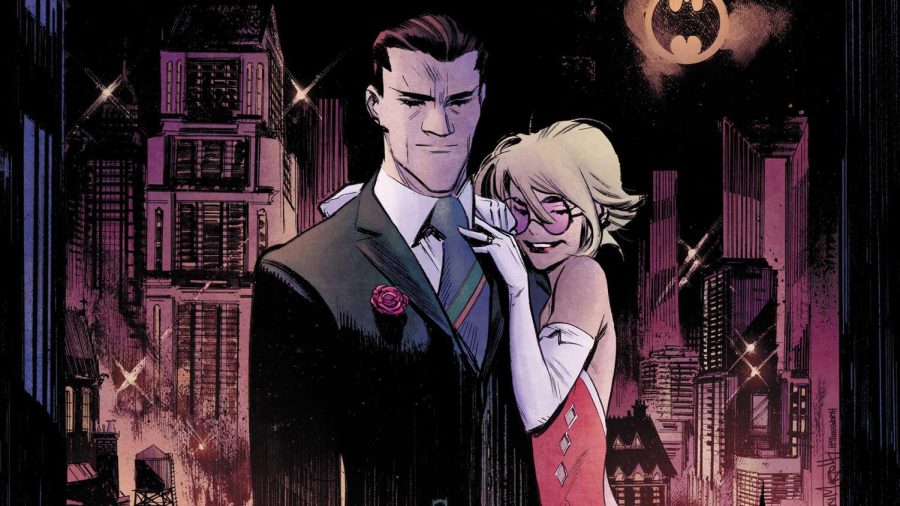“Batman: White Knight” saves the day!
April 1, 2022
Recently, I read the graphic novel “Batman: White Knight” written and illustrated by Sean Murphy. The book follows an interesting concept: what if the Joker regained his sanity, and it was revealed that Batman was the true plague on Gotham? While this story is not canon, it reveals a lot about the characters both in and out of the main timeline.
I enjoyed many things about this book, including the art, characterization, and plot. To begin, Murphy’s art style is very unique and expressive. He uses sketchy line art and blocky color schemes to communicate the fast-paced plot of the story. The character design is unique and intriguing.
Another aspect Murphy does well is the characterization, particularly of Jack Napier (a reinvented, sane Joker), Batman, and Harley Quinn. To begin, Murphy brilliantly depicts both the insanity of the Joker, and Jack Napier’s feverish attempts to redeem himself. Before his transformation, the Joker is presented as an eclectic “fanboy” of the Dark Knight. His antics remind one of the Joker’s campy roots in media like the 1960s Batman series. The translation of Napier from an obsessed madman to a charismatic politician is well-done, and leads the readers to many moral quandaries about a person’s past. Batman, on the other hand, is framed as a morally gray character. The story presents him and his team (Nightwing and Batgirl) with an interesting realization: that Batman himself is the source of Gotham’s problems. Finally, the story takes an interesting approach to Harley Quinn and her relationship with Jack. Here, we can see more of Harley’s roots as an academic woman. She is smart and analytical, and loved Joker despite his problems, not because of them.
Finally, the plot feels incredibly true to life. Of course, one always has to suspend their disbelief when reading a comic, but “Batman:White Knight” takes a more realistic and analytical approach to the Batman universe. The story explores real world themes that plague cities like Gotham: racial injustice, de facto segregation, corrupt police officers, and politicians. The story also delves into an underutilized aspect of the Batman universe: the repercussions of having a vigilante rule your city, and how public perception of crime changed after the caped crusader took over Gotham.
To conclude, I would recommend this graphic novel to fans of Batman, and in particular his dynamic with the Joker. I give this novel 4 out of 5 stars.


